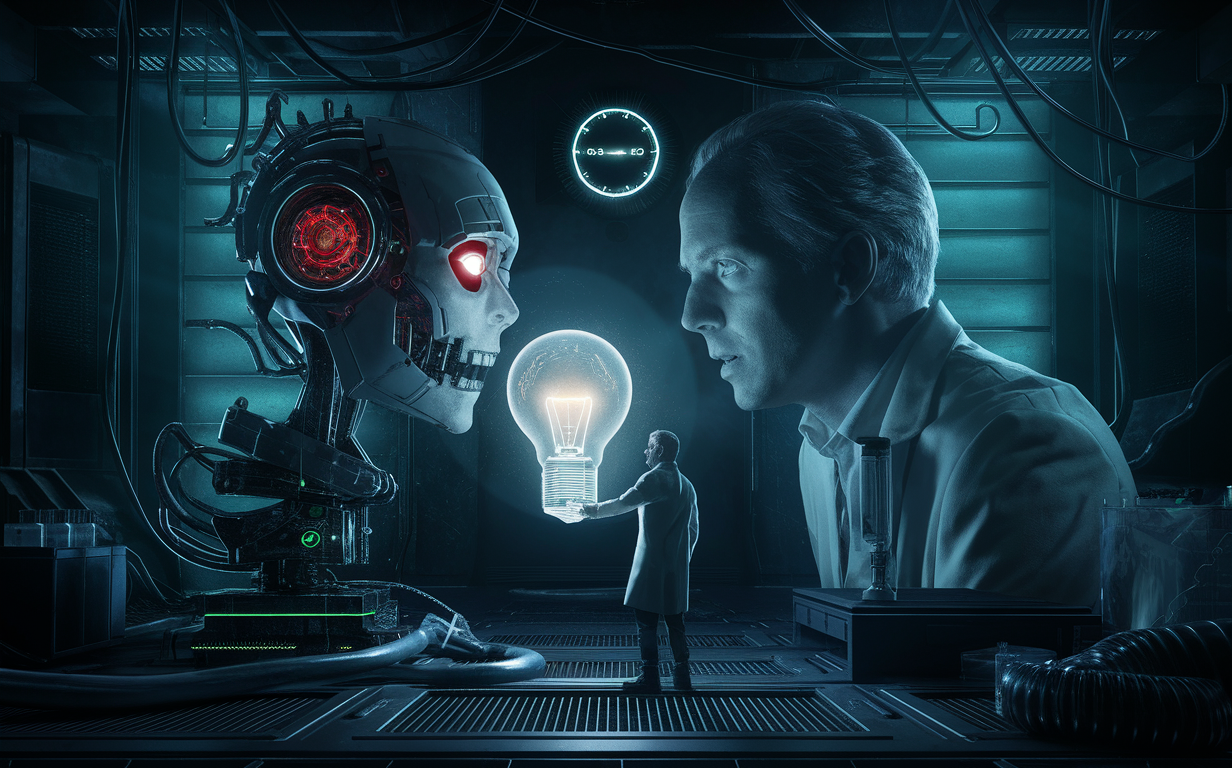Introduction:
The AI Revolution and Human Intelligence The development of Artificial Intelligence (AI) has raised many questions about how close AI is to mimicking human intelligence. The rise of Large Language Models (LLMs) has created a buzz, with some even speculating that AI could soon match human capabilities. But how far is AI really from achieving this? In this article, we will explore the LLM revolution, compare AI’s current capabilities with human intelligence, and discuss the future of AI.
What Is Human Intelligence?
Human intelligence is a complex set of cognitive abilities. These include reasoning, problem-solving, emotional understanding, and creative thinking. Humans can learn from experiences and apply knowledge in new situations. This flexibility allows for abstract thought, self-awareness, and understanding of deep moral and ethical concepts.
Defining Artificial Intelligence
AI refers to the ability of machines to perform tasks that typically require human intelligence. These tasks include learning from data, recognizing patterns, and making decisions. However, AI is limited to the tasks it has been designed for. It doesn’t possess self-awareness, emotional intelligence, or the ability to generalize knowledge across different domains like humans do.
The Rise of Large Language Models (LLMs)
LLMs like GPT-3 and GPT-4 are some of the most advanced AI systems today. Trained on vast amounts of text data, they can generate human-like responses, engage in conversations, and even write articles. While LLMs can produce impressive text, they still have significant limitations. These systems analyze patterns in data but don’t truly understand the content or context.
Key Differences Between AI and Human Intelligence
AI excels at narrow tasks but struggles with tasks outside its training scope. Unlike humans, AI cannot adapt to different scenarios or solve diverse problems. Additionally, human intelligence involves emotions, self-awareness, and creativity—areas where AI still falls short.
Can AI Be Truly Creative?
AI can generate content and mimic creative processes, but its creativity is limited to the data it has seen. Humans, on the other hand, can create entirely new ideas, combining concepts in unique ways. AI lacks the intuitive and abstract thinking that humans rely on for true innovation.
Practical Applications of AI Today
Despite its limitations, AI has found numerous practical applications:
- Healthcare: AI helps diagnose diseases, suggest treatments, and assist in medical research. However, human expertise is necessary for final decisions and ethical judgments.
- Finance: AI helps in risk management and fraud detection. It processes vast amounts of data to spot trends, but human insight is crucial in volatile market conditions.
- Education: AI creates personalized learning experiences, helps with grading, and assists students. However, human teachers provide the emotional support and contextual understanding that AI cannot.
- Entertainment: AI is used in content creation, from writing to video production. While AI can assist in creating content, it lacks the passion and originality that human creators bring to the table.
Is AI Close to Human Intelligence?
In AI vs Human Intelligence AI has made tremendous progress but is still far from replicating human intelligence. The key differences include:
- General Intelligence vs. Narrow Intelligence: While humans can apply their intelligence to a wide range of tasks, AI excels only in specific areas.
- Consciousness and Self-awareness: AI lacks consciousness and cannot think or feel like humans. It follows predefined patterns but doesn’t experience the world.
- Ethical Decision-making: Humans make decisions based on ethical considerations, emotions, and values. AI, however, follows programmed instructions without understanding morality.
Challenges AI Must Overcome
In AI vs Human Intelligence to reach human-like intelligence, AI faces several hurdles:
- Data Limitations: AI is dependent on data. Its performance is limited by the quality and breadth of the data it has been trained on.
- Bias and Fairness: AI can inherit biases from the data it’s trained on. Ensuring fairness and eliminating bias is crucial.
- Transparency: AI decisions must be explainable to humans. Without transparency, trusting AI becomes difficult.
FAQs About AI and Human Intelligence
- Will AI ever be as intelligent as humans? While AI will continue to improve, it is unlikely to fully match human intelligence. The complexity of human cognition is beyond the scope of current AI.
- What role will AI play in the future? AI will automate tasks, enhance decision-making, and improve efficiency in various industries. However, it will complement rather than replace human intelligence.
- What are the risks of AI? AI risks include bias, ethical concerns, and job displacement. As AI grows, managing these risks will become increasingly important.
Conclusion:
In AI vs Human Intelligence
AI is evolving rapidly, and LLMs have made significant contributions to advancing the field. However, the gap between AI and human intelligence remains significant. AI is improving at specific tasks, but it is still far from replicating the full range of human capabilities. As AI continues to develop, it will play an essential role in various industries, but it will not replace the rich complexity of human thought, creativity, and emotion.
Summary
In AI vs Human Intelligence AI, especially through Large Language Models (LLMs), has made impressive progress but still falls short of matching human intelligence. While AI excels in specific tasks, it lacks general intelligence, creativity, and emotional understanding. This article explores the gap between AI and human intelligence and what the future holds.

